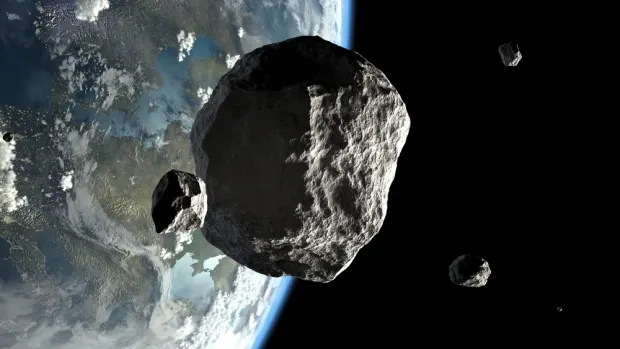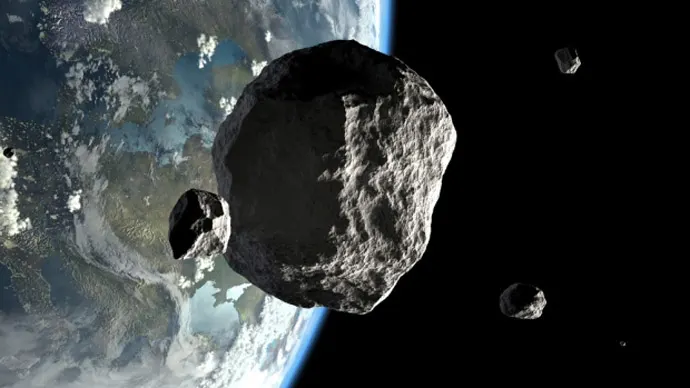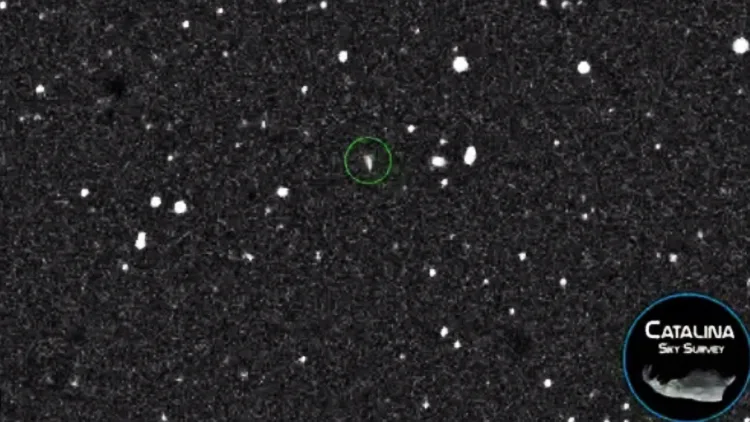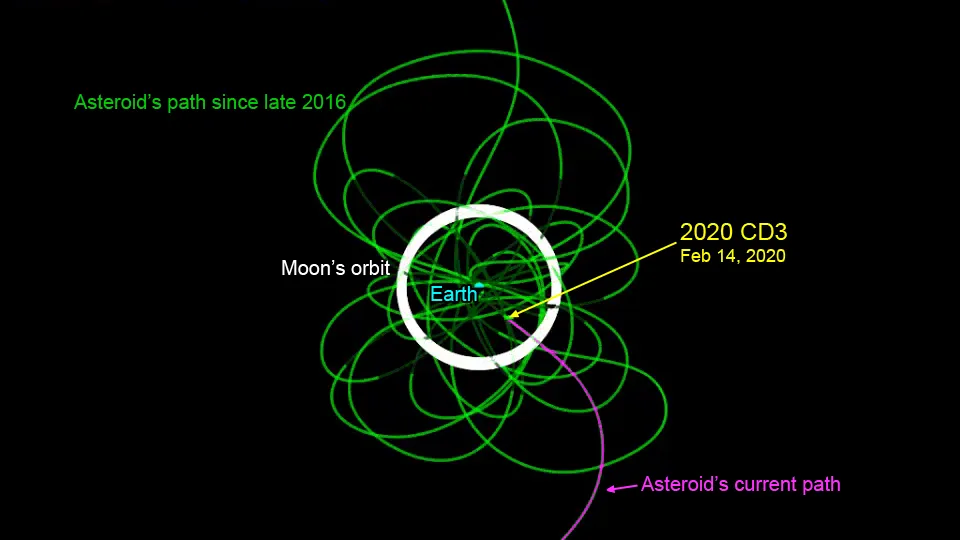
Earth picked up a new mini-moon in 2017, and it'll soon be gone
Earth snagged a car-sized asteroid about three years ago, but it won't be around much longer

This artist impression shows a small asteroid making a close pass by Earth. Credit: Shutterstock
Astronomers have detected a small asteroid, known as 2002 CD3, that has apparently been looping around the Earth for the past three years, and soon this 'mini-moon' will be gone.
On their journey through space, Earth and the Moon are a constant pair. Rarely, though, the pair picks up a temporary travelling companion. These small asteroids are known as mini-moons.
On February 15, 2020, astronomers Theodore Pruyne and Kacper Wierzchos discovered a previously unknown asteroid, using the Mount Lemmon Observatory in Arizona. From what they saw, it is a rocky asteroid, around two to three-and-a-half metres wide, and as they watched it night by night, they got a better idea of the path it was on, as it travelled through space.

This 'discovery image' of Earth mini-moon 2020 CD3 was posted to Twitter. Credit: Kacper Wierzchos/Catalina Sky Survey
Now, there are a few types of paths that asteroids can be on. Some are very far from Earth and never come near us, mostly sticking around in the asteroid belt between Mars and Jupiter. Others fly past Earth - some millions of kilometres away, as well as rare ones that pass by much closer. Others still hit Earth. These are mostly harmless, but one or two have packed quite the punch.
Then there are the extremely rare cases. These are ones that fly past Earth at just the right distance, and along just the right path. So, when they encounter Earth's gravity, the planet gives them a little tug, so that they fall into orbit around us. While these are still asteroids, and they are always temporary (in one way or another), they are often called mini-moons.
Asteroid 2020 CD3, formerly known as C26FED2, is one of these last examples - a 'temporarily captured object' or TCO.
When Pruyne and Wierzchos traced its orbit, they found that this roughly car-sized space rock wasn't orbiting around the Sun. It was orbiting around Earth! Even more remarkably, it had been doing so, unseen, since 2017!
In the animation above, you can see 2020 CD3 enter the field of view and begin orbiting Earth in long, looping ellipses (the white 'ring' is the Moon's orbit). Then, it suddenly leaves.
Apparently, this particular close-pass of the asteroid, when it was finally spotted by the Catalina Sky Survey on February 15, was its very last orbit around Earth. From here, it is on its way out, and it will likely never return.

The path of this mini-moon has carried it around Earth for nearly three years, and it now appears to be outbound, headed off into space. Credit: Tony Dunn/Scott Sutherland
This isn't the first confirmed mini-moon astronomers have discovered. The Catalina Sky Survey found one other before this - 2006 RH120 - which orbited Earth back in 2006 to 2007 before returning to interplanetary space.
"It's a big deal as out of ~ 1 million known asteroids, this is just the second asteroid known to orbit Earth," Wierzchos said in a Twitter post on February 25.
There may have been one other mini-moon found, as well.
Patrick Shober of Curtin University in Australia led a research team that investigated one particular fireball recorded by Australia's Desert Fireball Network. Based on their study published in early December 2019, they found that the meteoroid that caused this particular fireball was moving relatively slowly, and that it had plunged into the atmosphere travelling almost straight down.
By tracing its trajectory back, they found that there was a good chance it was circling around Earth for some time before it eventually hit the planet.
Sources: Kacper Wierzchos | MIT | Science Alert











